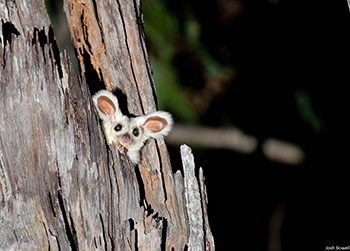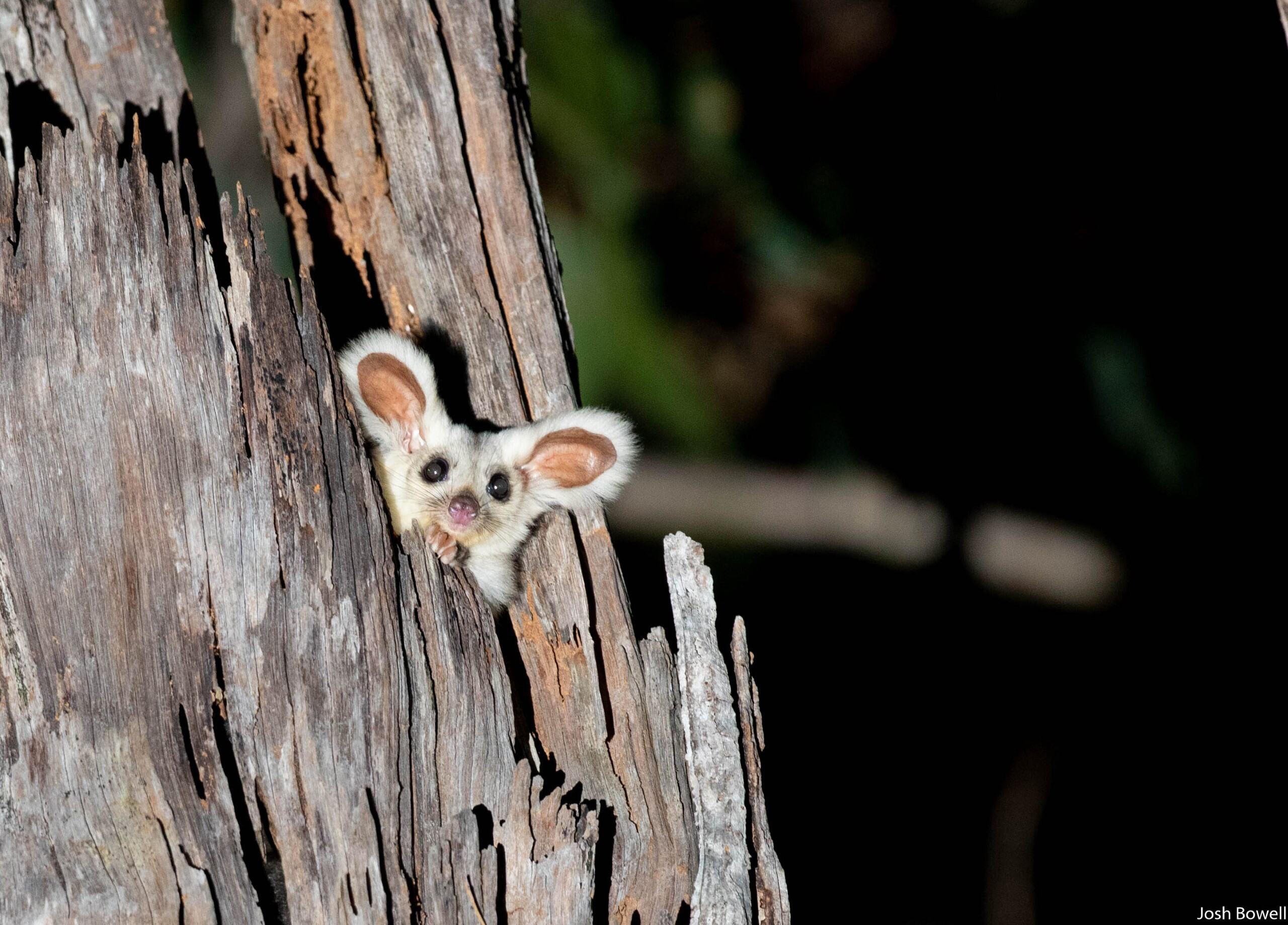Greater glider
Helping the elusive and endangered greater glider to thrive
The endangered greater glider is a barometer of the health of our forest ecosystems. Due to habitat loss and climate change, it needs our support to thrive.
Species overview
Australia’s largest gliding marsupial, the greater glider is a nocturnal animal with large, fluffy ears.
In Queensland, the greater glider is spread across a broad geographic range, living on the Country of many First Nations people. Due to the greater glider’s elusive and nocturnal nature, we are still gathering knowledge about this species, its cultural significance, ecology and behaviour.
Once found throughout eastern Australia, the greater glider population has significantly declined as their habitat diminishes in condition and becomes more fragmented.
Ecology and behaviour
The greater glider lives high in the canopy and depends on forests with large, old eucalyptus trees with well-formed hollows. The greater gliders use these hollows for shelter and breeding.
The greater glider is a food source for large, nocturnal predatory birds, like the Powerful Owl, and acts as a barometer of change when its ecosystem is not functioning well.
The greater glider is a solitary creature with a small home range of 1–4 hectares, which includes several den trees. The gliders will pair up during the breeding season between March and June and usually have a single joey, which lives in its mother’s pouch until it is 9 months old.
Greater gliders shelter in their hollows during the day, emerging at night to feed in the treetops. They can glide approximately 40m between trees. Like koalas, greater gliders feed on eucalyptus leaves and are generally slow and clumsy on the ground. They have a specialised metabolism to digest the natural toxins found in eucalyptus leaves.
Greater gliders are very cryptic and quiet animals. They don’t make loud sounds and may communicate through scent-marking.

Characteristics
The greater glider has:
- large and fluffy ears
- highly variable fur colour—individuals in the same population can range from almost white to dark chocolate and black
- a tail up to 60cm long
- a weight of up to 1.8kg
- a gliding membrane (patagium) that stretches from ankle to elbow.
Threats
- Habitat loss and fragmentation
- Inappropriate fire regimes and intense bushfires
- Climate change, particularly warmer temperatures.
What’s being done?
- Queensland’s national parks and protected areas play an important role in protecting threatened species. As part of the Queensland Protected Area Strategy 2020–2030, we’re acquiring more land to expand our protected area system and help conserve critical species habitat.
- We are looking at ways to implement appropriate fire regimes, such as cultural burning to protect denning and foraging habitats for greater gliders. Intense or frequent bushfires can impact the greater gliders’ den trees. These hollow-bearing trees are susceptible to collapse during fires as they act as chimneys.
- We provide advice to industry on measures (e.g. the size and type of tree) to retain and protect key glider habitat features during timber harvesting.
- Aerial and ground surveys have helped to map and monitor the glider and its habitat.
Who is helping?
In 2006, the Society established the Queensland Glider Network to engage and educate the community and coordinate activities, such as greater glider sightings. They also work to improve glider habitat by preserving hollow trees and installing nest boxes.
This Society is raising awareness and funds to help glider conservation activities. The greater glider is their 2024 Wildlife of the Year.
USC researchers are looking at new ways to map greater glider habitat.
How you can help
- If you live on or near greater glider territory, create a gilder-friendly home by maintaining the wildlife corridors on your property. Avoid using fencing and netting that may trap or entangle them such as barbed wire or bird netting.
- Join a local community or conservation group working to restore habitat or monitor glider populations, such as the Queensland Glider Network.
- Report greater glider sightings by calling 1300 130 372.
